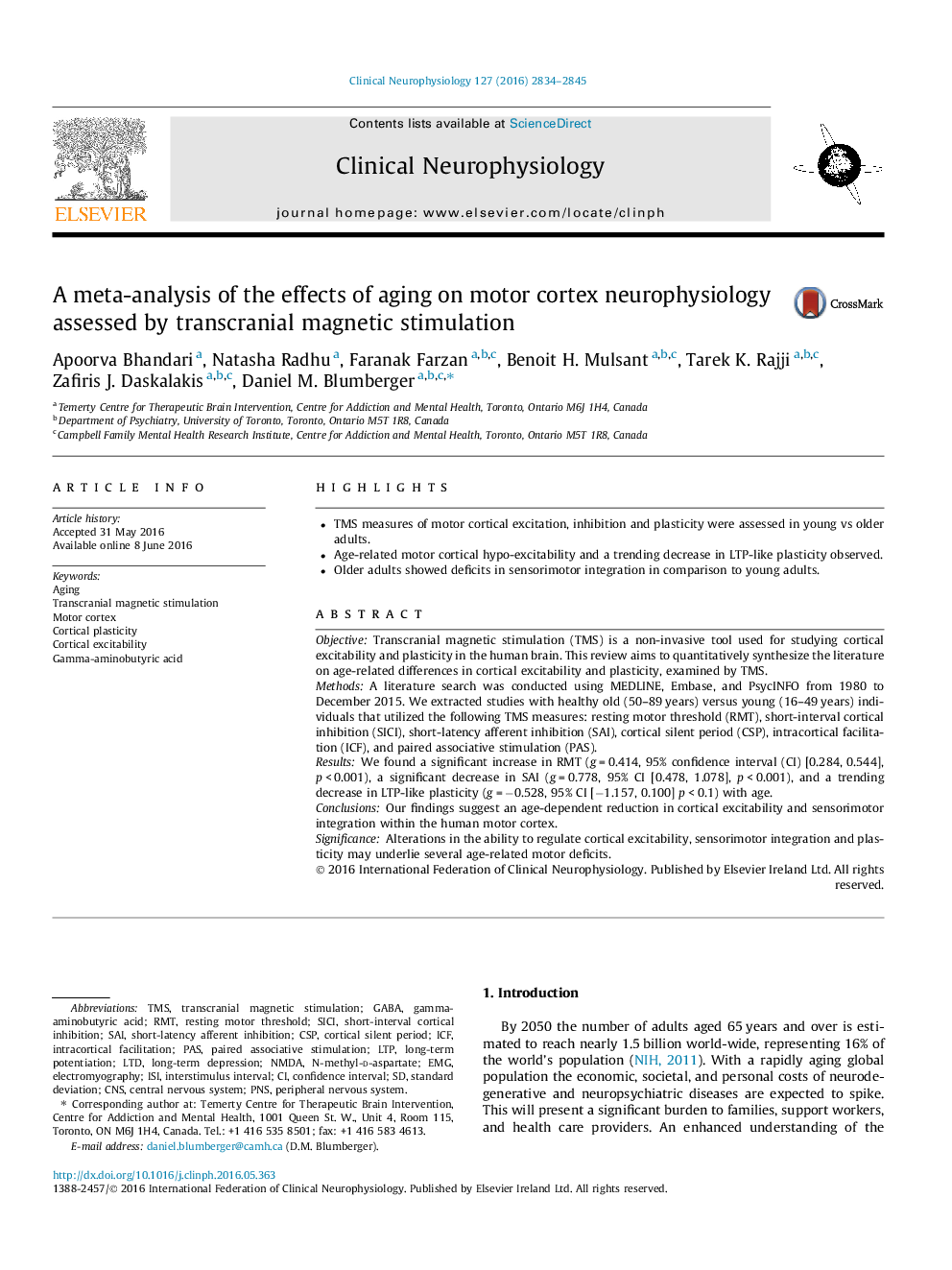| Article ID | Journal | Published Year | Pages | File Type |
|---|---|---|---|---|
| 3042659 | Clinical Neurophysiology | 2016 | 12 Pages |
•TMS measures of motor cortical excitation, inhibition and plasticity were assessed in young vs older adults.•Age-related motor cortical hypo-excitability and a trending decrease in LTP-like plasticity observed.•Older adults showed deficits in sensorimotor integration in comparison to young adults.
ObjectiveTranscranial magnetic stimulation (TMS) is a non-invasive tool used for studying cortical excitability and plasticity in the human brain. This review aims to quantitatively synthesize the literature on age-related differences in cortical excitability and plasticity, examined by TMS.MethodsA literature search was conducted using MEDLINE, Embase, and PsycINFO from 1980 to December 2015. We extracted studies with healthy old (50–89 years) versus young (16–49 years) individuals that utilized the following TMS measures: resting motor threshold (RMT), short-interval cortical inhibition (SICI), short-latency afferent inhibition (SAI), cortical silent period (CSP), intracortical facilitation (ICF), and paired associative stimulation (PAS).ResultsWe found a significant increase in RMT (g = 0.414, 95% confidence interval (CI) [0.284, 0.544], p < 0.001), a significant decrease in SAI (g = 0.778, 95% CI [0.478, 1.078], p < 0.001), and a trending decrease in LTP-like plasticity (g = −0.528, 95% CI [−1.157, 0.100] p < 0.1) with age.ConclusionsOur findings suggest an age-dependent reduction in cortical excitability and sensorimotor integration within the human motor cortex.SignificanceAlterations in the ability to regulate cortical excitability, sensorimotor integration and plasticity may underlie several age-related motor deficits.
